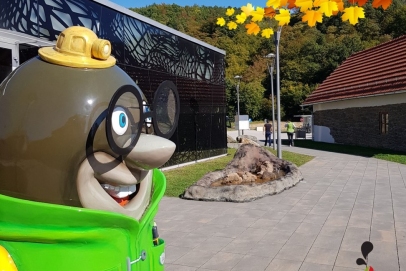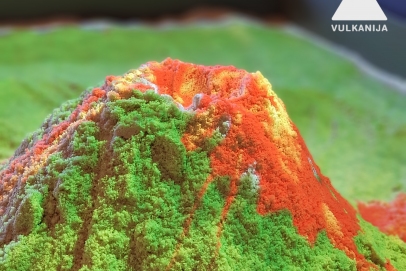About volcanoes
What are volcanoes?
Most people have never seen a real volcano but they have learned about them through books or movies. So they usually think of a volcano as a huge mountain that explodes and spew out masses of lava.
Type of volcanoes
Volcanoes are divided according to their activity, shape and type of volcanic eruption.
Volcanic activity
Active volcanoes are those that erupt regularly, those that have erupted in historical times but are now quiet called dormant or inactive, and those that have not erupted in historical times called extinct.
Shape of volcanoes
According to their shapes, volcanoes are divided into shield, cinder cones and stratovolcanoes, and also into volcanic fissures. A special type of volcanos are maari. Such a volcano also existed in the area of the present-day Goričko.
Shield volcanoes resemble large shields lying on solid basis and have the shapes of a flat dome. Shield-like shapes are formed by the outflows of low-viscosity basaltic lava or deposits of large quantities of pyroclastic material.
Cinder cone volcanoes are cone-shaped, with the core consisting of tephra witch was deposited throughout the history of theirs eruptions. They are usually highly symmetrical and have deep craters. Stratovolcanoes, however, are large volcanoes, also consisting of alternating layers of tephra and lava.
Near the boundaries between two diverging tectonic plates, magma or lava may erupt from the fissures. These volcanoes are usually found on the ocean floor in the so-called oceanic ridges.
A maar is a low-relief volcanic crater. Volcanic eruptions are rather explosive due to groundwater coming into contact with the hot magma from the upper parts of the Earths mantel. The crater is usually filled with water.
Supervolcanoes
A volcano which erupts and throws magma and rocky particles over an area greater than 1000 cubic kilometers is considered a supervolcano. These massive eruptions dwarf typical volcanic eruptions. It is like comparing a small shock from static electricity to a lightning bolt: Mount Vesuvius produced 100,000 cubic yards of magma per second during its massive explosion in A.D. 79. The damage from this "ordinary" volcano was legendary. If Mount Vesuvius had been a supervolcano, it would have produced 100 million cubic yards of magma per second.





